This Eden Crafters Beginner Guide starts with the basics: gather essentials like oxygen, food, and shelter.
Eden Crafters: Beginner Guide
Eden Crafters is an open-world survival and crafting game where you play as an astronaut, tasked with preparing a new planet for human settlement using only the resources around you. The environment itself is your main challenge-not hostile creatures, but rather the threats of starvation, limited oxygen, and extreme temperatures. With no looming rivals or ticking clock, you’re free to strategize and survive in your own way, adapting as you explore this indifferent world.
Getting Started
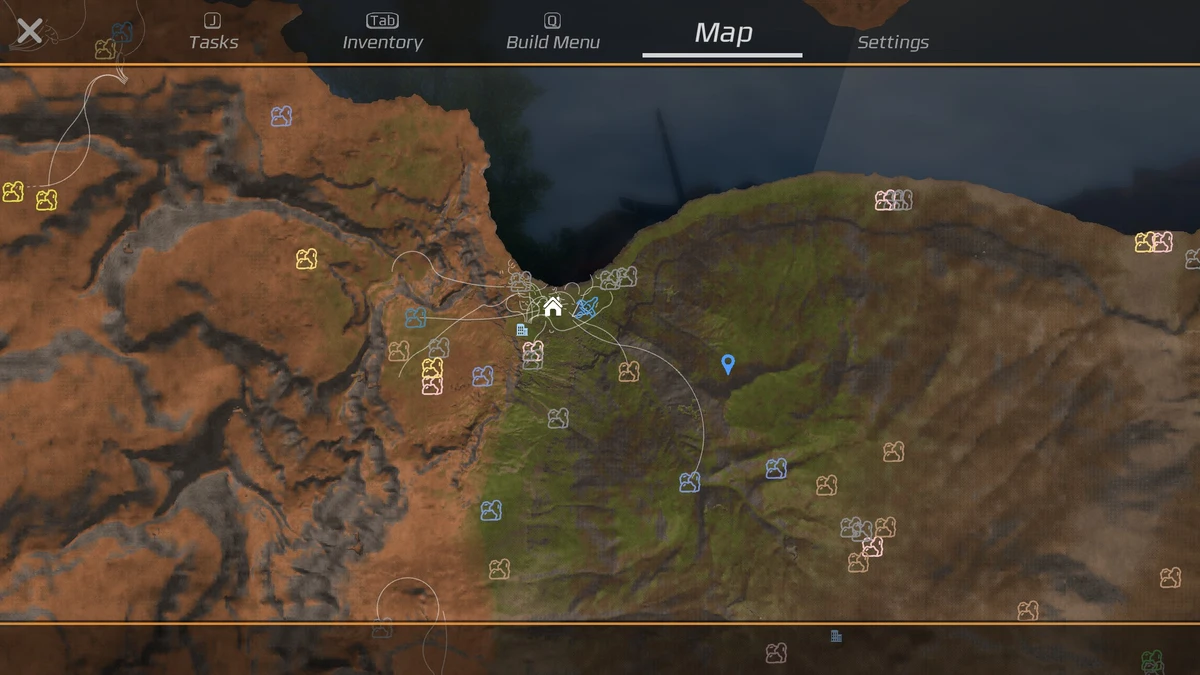
On Echo, you begin in a little valley, close to toxic yellow water and surrounded by gradually rising terrain. To your west, the land has a reddish tint, and that’s a hint: that area is warm – so warm, in fact, that you will slowly take damage there. You can mitigate this damage by eating, so it’s not an immediate death sentence to travel there – but do your business quickly.
The game, even at this fairly early state, has a walkthrough that guides you through harvesting some resources, building a shelter, building some workbenches, and so forth. You probably want to follow along; it will set you up nicely for the beginning of the game.
Beyond the tutorials, there are four ways to “progress” and unlock new craftable items and buildings in the game.
- By finding new resources
- By building a new type of building
- By putting rare materials in the Material Analyzer
- By completing terraforming tasks as described by the Planet Analyzer
Note that once you build the Planet Analyzer, you’ll receive hints on how to unlock things, and you can access this information at any time with the “J” key. Don’t sleep on these hints! I inadvertently made my game harder than it needed to be by ignoring them – more on that later.
Also remember that you have a drone, which can be launched with the “V” key. While it can’t travel that far, it’s a great way to do a little exploring in hostile environments, getting a birds-eye view of the surrounding terrain, and building in hard-to-reach locations.
The Factors of Production
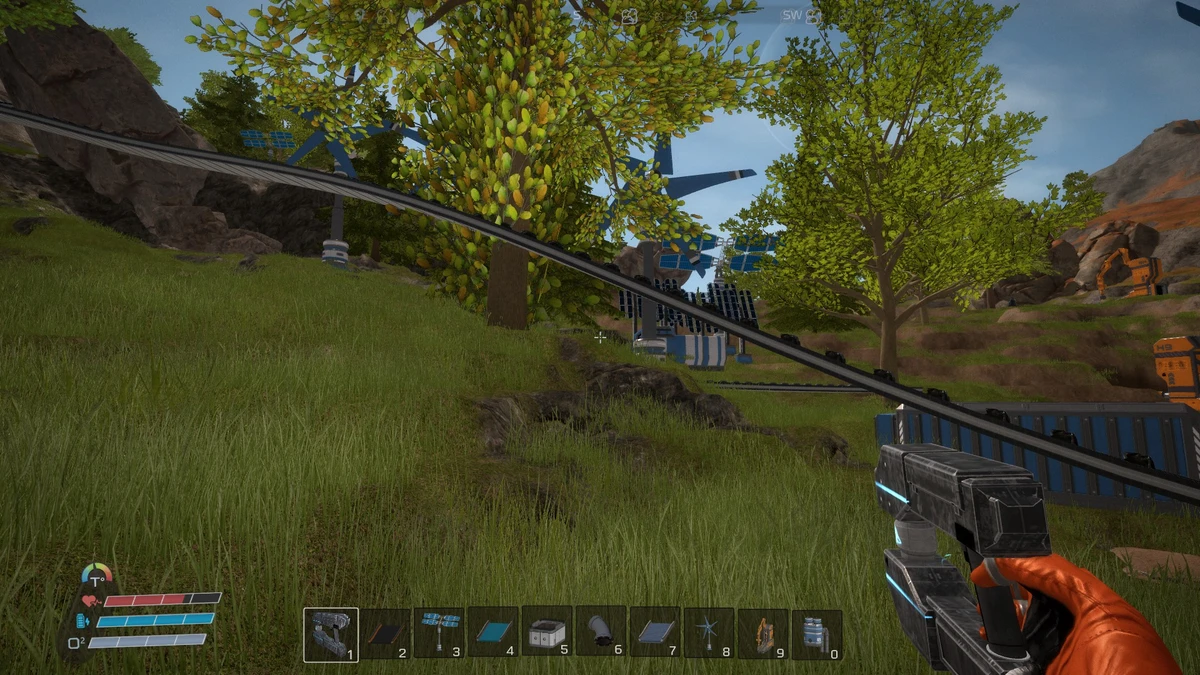
Eden Crafters centers around resource harvesting and item crafting, with increasingly complex requirements as you progress. Early on, resources are plentiful and easily gathered with your hand tool or drone—perfect for small-scale crafting. However, by mid-game, switching to Miners for bulk resource harvesting is essential.
For some items, setting up machinery for bulk processing becomes a major time-saver. While most items can technically be crafted by hand using workbenches, large quantities quickly make this tedious. For small amounts, like oxygen upgrades, shields, vehicle batteries, filters, AI chips, or nuclear reactors, manual crafting may be faster and simpler than setting up machinery.
On the other hand, items like iron plates are used constantly and in massive quantities, making them prime candidates for automation. A good rule: if you find yourself repeatedly crafting the same item, consider automating its production. Early items to automate include rotors and iron beams, while late-game items like composite beams (which have lengthy build chains) will require automation to meet high demand.
When automating, keep an eye out for bottlenecks. Your production speed will only be as fast as the slowest part of the build chain. For example:
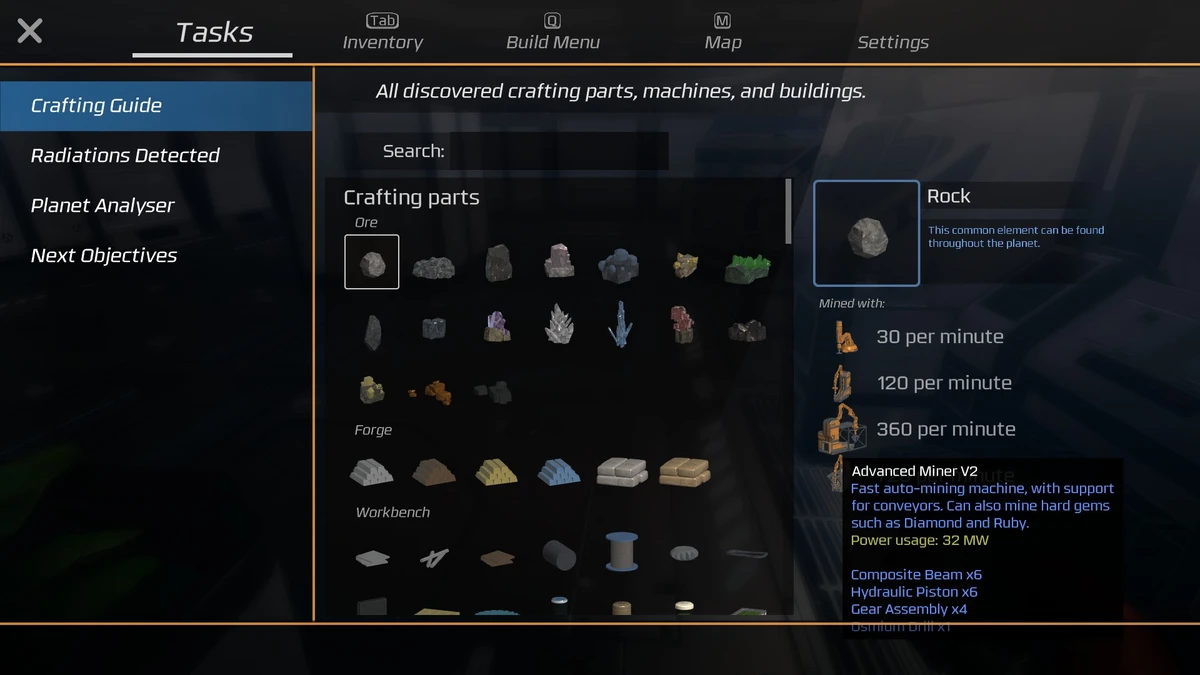
Wow! 360 iron a minute! Awesome!
Except:
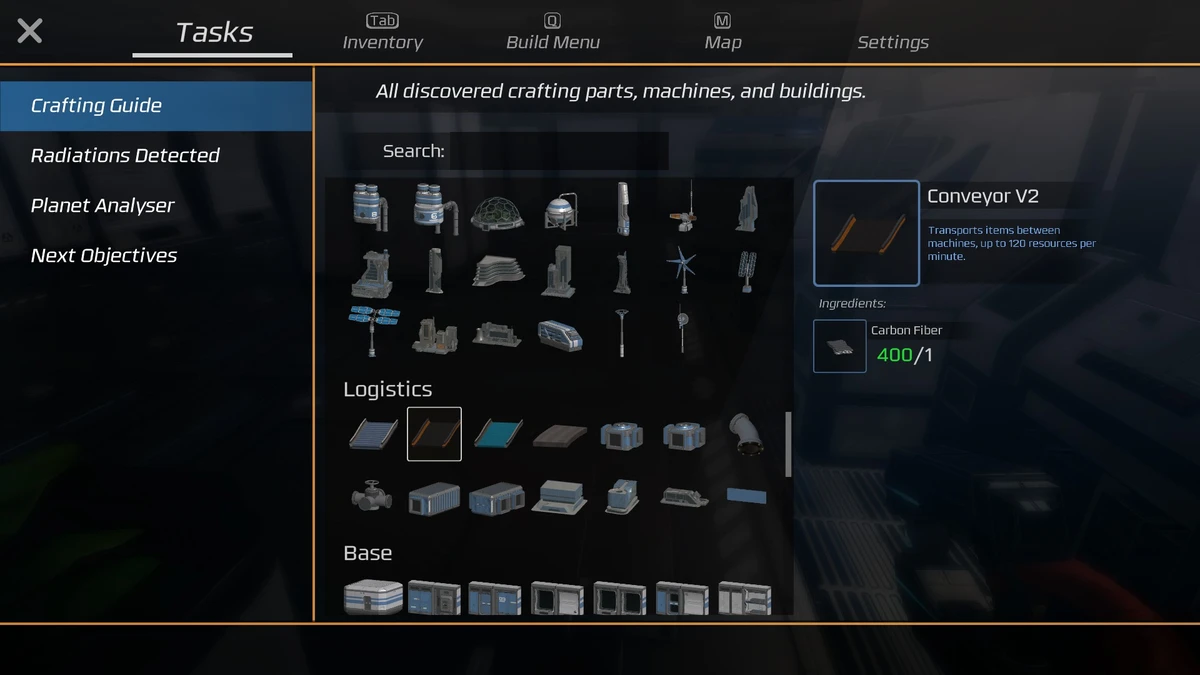
Oh, wait, that belt can only carry 120 items/minute. Which means I can’t take full advantage of that awesome production rate. And then, even more bad news:
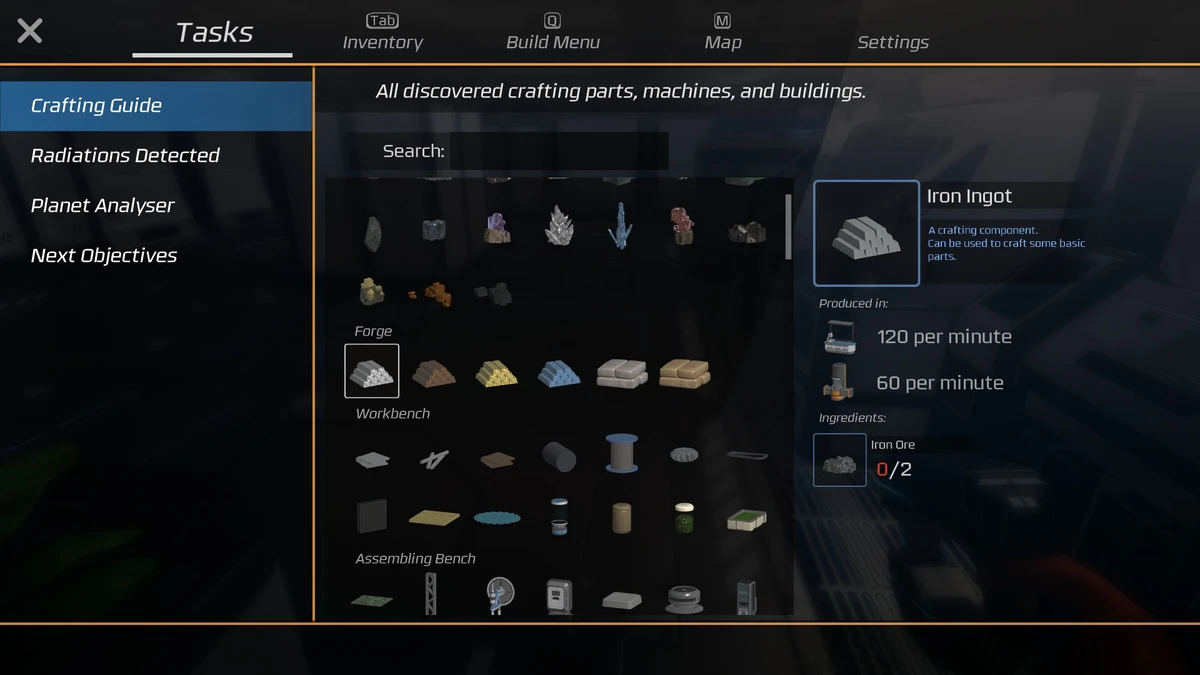
60/minute! BOGUS!
Forges will very, very frequently be a bottleneck, as will assembling machines. This has a couple of implications:
- It’s a waste of time to use conveyors faster than the machine at the receiving end can produce. It doesn’t actually harm anything to use carbon fiber conveyors to feed forges, and if you’re absolutely swimming in carbon fiber (which isn’t hard to do by midgame) you may want to use them anyway, but you don’t really gain anything by it.
- Particularly for lower tier ores, it’s wasteful to use fancier miners than you actually need. In our example, above, we can produce 360 iron/minute with the tier 2 mining machine – but even the highest end conveyor, the osmium alloy conveyor, can still only move 240 items/minute.
- You can partially work around limitations by using splitters and working in parallel. For example, a carbon fiber conveyor could feed iron into a splitter at 120 iron/min, which fed two forges each running at 60 iron/minute.
- One final consideration is to watch your power and water levels. Machines that need power (or power and water) seem to have their performance capped at the lowest of either of those. For example, if you only produce 75% of the power you need, your forge will throttle back to only doing 75% of the work – reducing itself to 45 items/minute. This might not be obvious unless you routinely check your machines; I know I’ve had circumstances where I didn’t think about power, built a couple new production lines, and then found myself puzzled as to why everything was running so slowly!
Have Starship, Will Travel
I initially found flying the starship to be an incredibly irritating experience. It did NOT handle the way I thought it would, and I was constantly having to wrestle with it. The key to a successful flight is to STOP TRYING TO CONTROL IT! In particular, don’t fight it on altitude control.
The game doesn’t actually tell you this, but your spaceship actually tries to autopilot itself, maintaining a reasonable altitude over whatever it’s flying over. This is why it’s constantly pitching itself up and down. I’ll grant you if you try to fly over a tall mountain you’ll need to hold down the lift key, but overall it does a pretty good job of staying at a reasonable altitude above the ground. So: don’t fight it.
Incidentally, I’ve fooled around with the Cargo Ship. It does hold significantly more cargo, but seems like it may be slower.
I haven’t fooled around with any of the ground vehicles; if you have, feel free to share your thoughts in the comments.
Two Secret Keys to a Better Building Experience
Two keys to having a much, much better experience, particularly in the mid to late game:
Tip #1: Use the drone! Particularly when building on the side of a hill (which you’ll definitely want to start doing later in the game, since you build some BIG buildings eventually) it’s so, so much less stressful to use the drone to do it, instead of trying to hike up the side of a hill yourself. Likewise, it can simplify the process of running a conveyor belt through rocky terrain (or a thin mountain range) immeasurably.
Tip #2: Warehouses! I slept on this way, way longer than I should have. At some point my terraforming efforts had unlocked a tier 3 warehouse, which needed a whole bunch of things I had no ability to produce at all, so I just stopped thinking about them. I was a heavy user of the tier 1 storage boxes, but saw no point in building one of the tier 2 ones. And that was where I made my mistake: the tier one warehouse doesn’t unlock until you build a tier 2 storage box.
The great, wonderful, downright magical thing about warehouses is that anything put into them is accessible to you, anywhere, from the Q build menu or at any of your workbenches. In fact, I would strongly recommend building a tier 1 warehouse and then immediately setting up build chains to supply it with all the resources it needs so you can start building them anywhere.
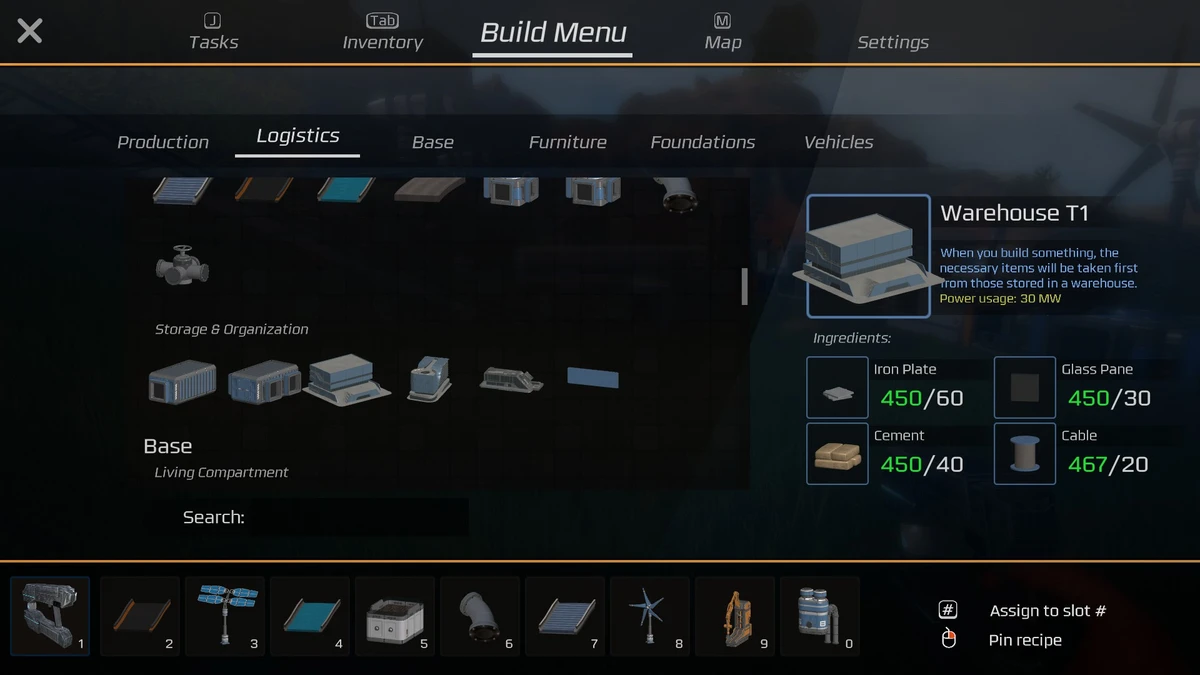
Building three tier 2 warehouses can be nice, since doing so increases your stack size by 10 each time, to a max of 50, but honestly, that’s a fringe benefit compared to the ability to instantly build a 100-plate conveyor belt in the middle of nowhere without having to make a supply run. It really is that amazing. Try it, you’ll like it!
Important Locations
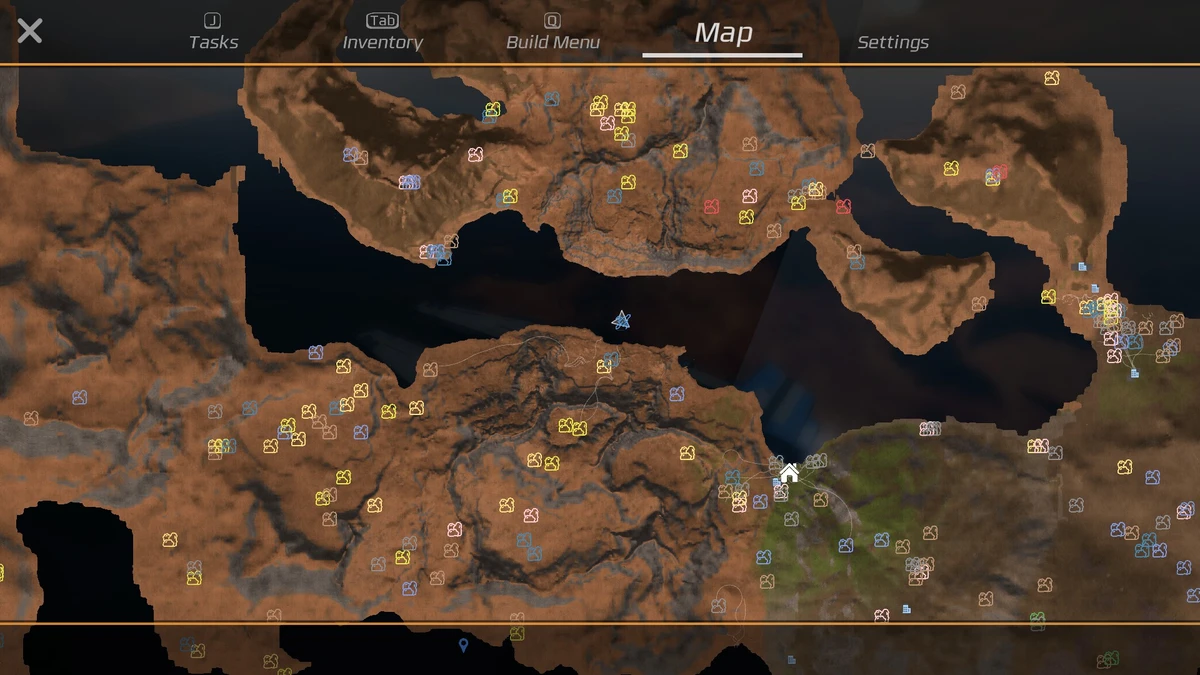
The green area is my initial starting location on Echo, and unsurprisingly I’ve built things up there. Note, however, that to the east there’s a thin strip of land that’s pretty flat and rich with resources; I did a lot of building there as well. To the west, I also did some building to harvest gold, sulfur, and carbon from three carbon rocks right next to each other.
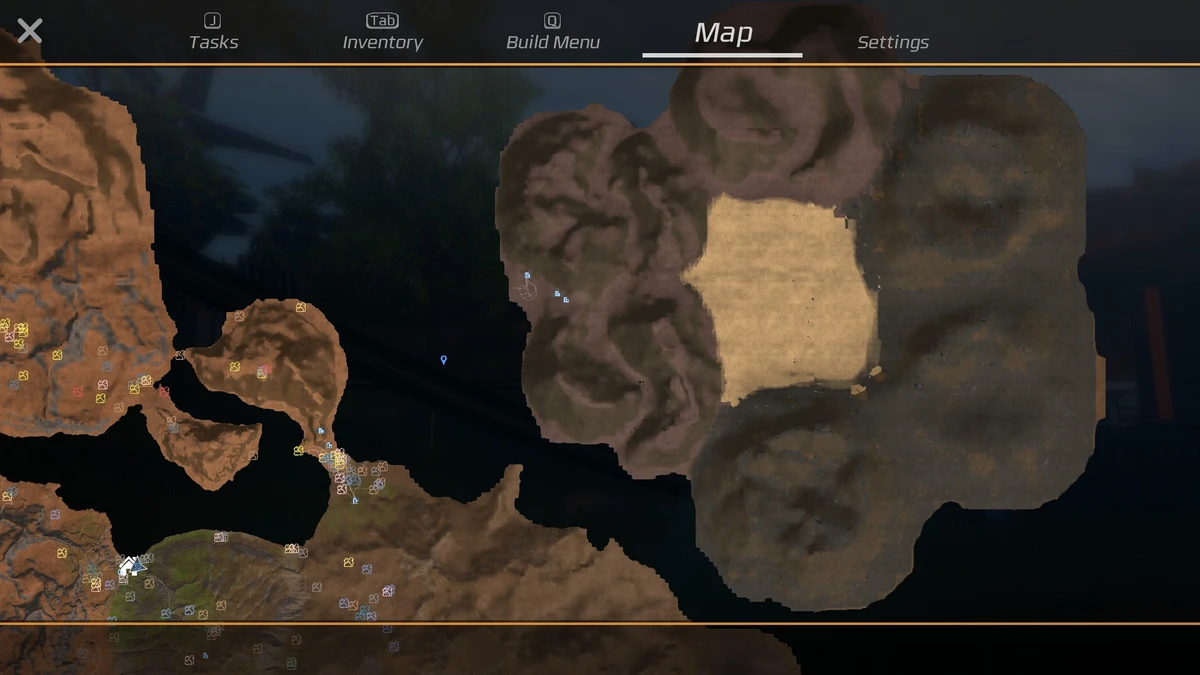
To the west here you can see that thin strip again; to the east, on the western shores of the crater island I set up a facility with a warehouse to harvest ruby, built thermal regulators, and phosphorus.
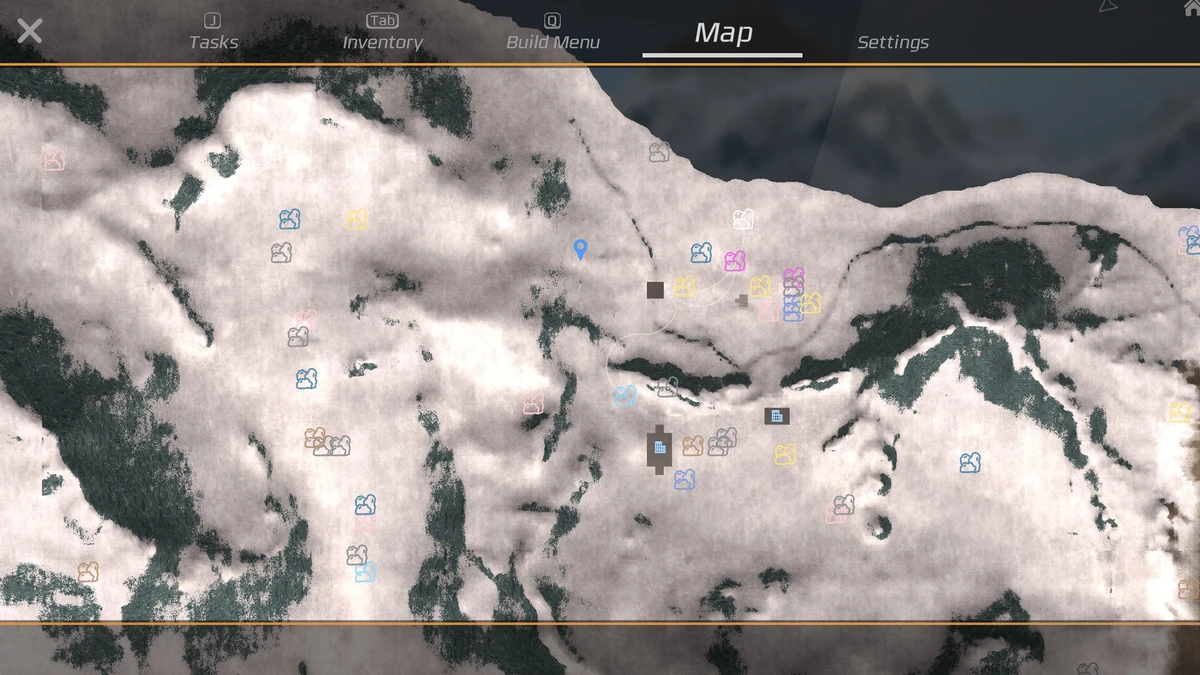
On the southern, snowy island I found a good place to harvest amethyst, diamond, and a little way up the slope to the south, sapphire.
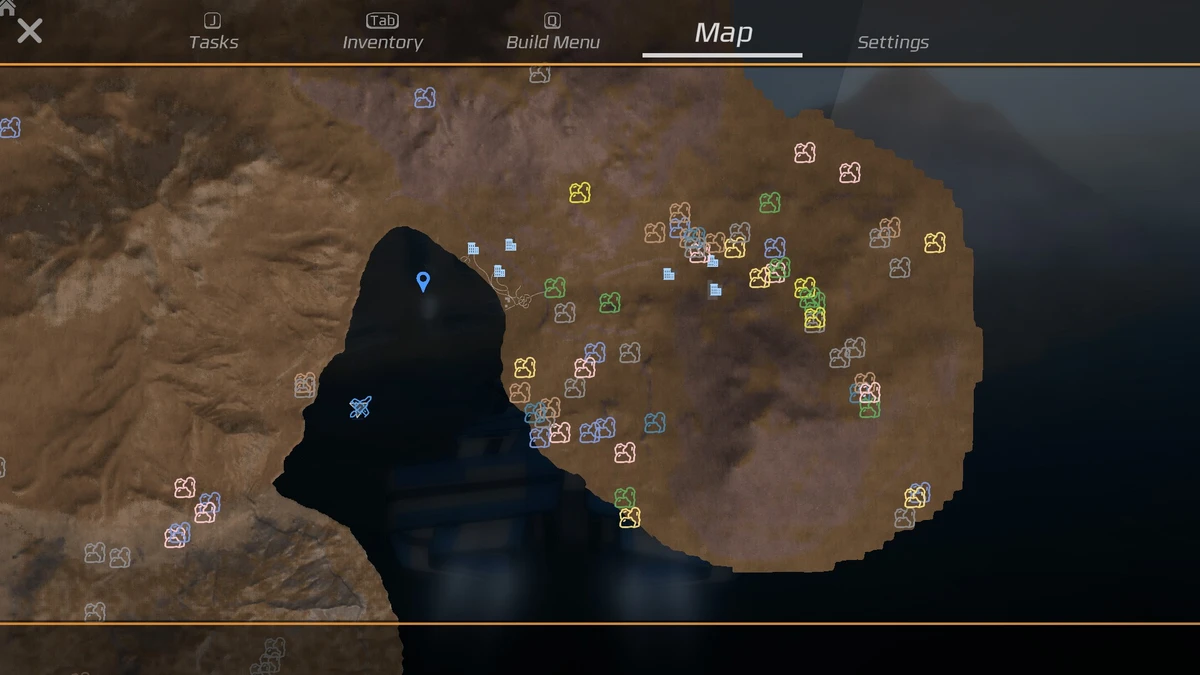
Finally, in this irradiated section of the map, once I’d cleared the radiation I built two nuclear plants fed by a uranium mining operation to power some endgame buildings.